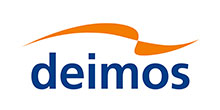ExoMars 2020 is heading towards Oxia Planum
ESA has selected Oxia planum as landing site for EXOMARS 2020 mission. Elecnor Deimos has supported the prime contractor with engineering analyses in the entry, descent and landing (EDL) phases.
13th of November, 2018
Elecnor Deimos concurs with the selection of the ExoMars 2020 landing site, which has been based on both scientific criteria, set to achieve the mission ambitious goal of looking for evidences of life on Mars, and in respect of the engineering requirements (ESA New).
On the engineering side, DEIMOS has played a fundamental role, supporting ESA and Thales Alenia Space in the assessment of the mission performance, in particular in the Entry, Descent and Landing (EDL) phases, to verify that the mission has been designed with proper margins with respect to multiple constraints and fly within a narrow “entry corridor”.
Given the mission objectives, landing in a specific area of Mars is mandatory and the landing accuracy has always been one of the mission design drivers. Landing ellipses give a graphical evidence of where the probe is expect to land, given dispersions on the initial conditions (separation from the carrier module), environment, vehicle properties and events. All in all, the mission analysis results give the evidence that a ballistic entry (no active control of lift is performed) is enough to land within the 50 km landing accuracy required to the mission.
Landing on Mars is not easy, as evident with the partial success of ExoMars 2016 (for which Elecnor DEIMOS supported ESA and Thales Alenia Space in the Schiaparelli post flight analyses), so the final decision to go to Oxia Plan is shared by us and considered wise. In fact Oxia Planum is generally safer than the alternative landing site, Mawrth Vallis since it lays at a lower altitude above the Martian “sea level” (MOLA = 0) leading to less challenging entry and descent phases (denser atmospheric layers are available to slow down the probe before touchdown).
Elecnor Deimos will present details about the analyses performed to support ESA and TAS on the EDL engineering analyses for the System Consolidated Design Review (SCDR) at the upcoming HiSST conference, scheduled on 26-29 November in Moscow, Russia.
Elecnor Deimos, through its Spanish subsidiary Deimos Space, has been involved in ExoMars since 2004, carrying out technical activities in the Mission Engineering and Guidance, Navigation and Control domains for more than 13 years.







